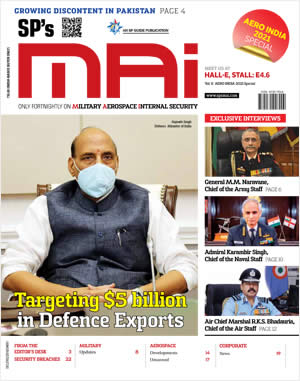INDIAN ARMED FORCES CHIEFS ON OUR RELENTLESS AND FOCUSED PUBLISHING EFFORTS

The insightful articles, inspiring narrations and analytical perspectives presented by the Editorial Team, establish an alluring connect with the reader. My compliments and best wishes to SP Guide Publications.

"Over the past 60 years, the growth of SP Guide Publications has mirrored the rising stature of Indian Navy. Its well-researched and informative magazines on Defence and Aerospace sector have served to shape an educated opinion of our military personnel, policy makers and the public alike. I wish SP's Publication team continued success, fair winds and following seas in all future endeavour!"

Since, its inception in 1964, SP Guide Publications has consistently demonstrated commitment to high-quality journalism in the aerospace and defence sectors, earning a well-deserved reputation as Asia's largest media house in this domain. I wish SP Guide Publications continued success in its pursuit of excellence.
- Appointments Committee of Cabinet approves one-month extension in service of Chief of the Army Staff
- Admiral Dinesh K. Tripathi assumes Command of the Indian Navy as 26th Chief of the Naval Staff
- Prime Minister witnesses 'Bharat Shakti' – a Tri-Services Firing and Manoeuvre Exercise in Pokhran, Rajasthan
- Interim Defence Budget 2024-25 — An Analysis
- Union Defence budget 2024
- Prime Minister Modi Commemorates Indian Navy Day in a Grand Ceremony
First defence deal of Modi regime with the United States
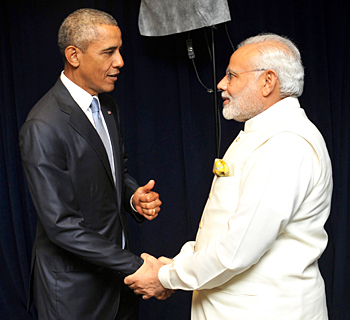
Even before Prime Minister Narendra Modi ushered into the meeting room of President Barack Obama in the Headquarters of the United Nations, the officials of the Indian Ministry of Defence put final signatures to the two most significant deals with the US Department of Defense and Boeing, the manufacturers of the two helicopters Chinook and the Apache. Significantly, the $3.1-billion deal was inked at breakneck speed, rarely seen in Indian defence establishment. In fact the political clearance, through the Cabinet Committee on Security (CCS), for the deal was given just on the eve of the departure of Prime Minister Modi for the United States on September 22. This was the first big-ticket defence deal signed during the 16 months of the Modi regime. The deal was pending since the Manmohan days, who, in the penultimate year of his rule, had cleared the decision to acquire the two class of helicopters from Boeing. Since then Boeing management kept reminding the Indian Ministry of Defence (MoD) of the sharp revision in final agreed price if the deal was not operationalised. The Indian Government kept requesting Boeing to have patience. Finally the deal has gone through and defence sources say that the numbers agreed to is not final and more will be ordered. The deal inked on September 28 envisions the supply of 22 Apache attack helicopters and 15 Chinook heavy-lift helicopters.
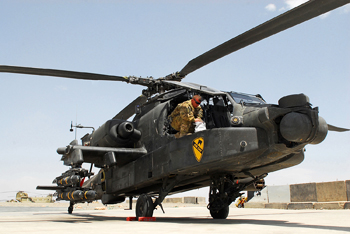
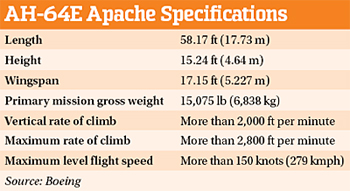
Though some of the defence deals encounter controversy relating to payments and the usefulness of the equipment for the forces, the two helicopter deals will not attract any opprobrium as the deal was first okayed by the previous UPA regime led by Manmohan Singh in 2013. The NDA regime has only implemented his decision. In recent years the United States has emerged as favourite arms supplier to the Indian armed forces and is the only country which has not found itself embroiled in any kickbacks related controversy, as most of the deal has been transacted through foreign military sales (FMS) route of the US State Department under which the buyer country pays the same amount paid by the US forces to the US manufacturers. However, additional service charges are leveled, which are in the range of few per cent.
The acquisition of these helicopters will significantly improve the combat capability of the Indian army deployed on high mountains, on which transfer of weapons and platforms is very cumbersome. The Chinooks can ferry 55 combat troops or two combat ready jeeps. The Chinooks can also carry 11,000 kg of external load from its belly, which is almost equal to one howitzer gun. The Apache attack helicopters will add to the firepower of the IAF, which is already equipped with Mi-35 Russian attack helicopters and can prove destructive for the enemy ground forces. The Russian attack helicopters were acquired in the early 1990s and are now on the verge of retirement.
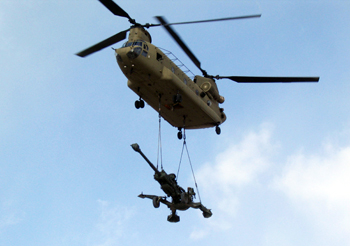
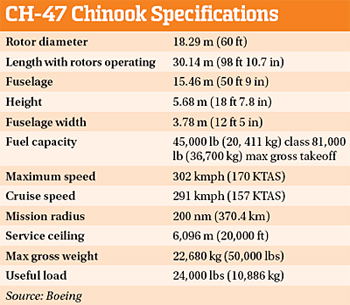
With the signing of the deals, the IAF will have to gear up fast to get ready for their induction, which will probably take three years. The US companies have always adhered to the timelines unlike some other defence firms. Earlier India had ordered from Boeing eight maritime reconnaissance aircraft P-8I, to which four were added later. IAF also acquired ten C-17 Globemaster III from the Boeing. From Lockheed Martin IAF acquired the C-130J Super Hercules. In the middle of last decade India had acquired the weapon locating radars. In total, the Indian armed forces acquired weapon systems and platforms from US companies worth over $10 billion.
One of the principal reasons of hesitancy on the part of Indians to acquire the weapon systems from US was the conditionality of inking four foundational agreements, — LSA (Logistics Supply Agreement), BECA (Basic Exchange and Cooperation Agreement), CISMOA (Communications and Information Security Memorandum of Agreement) End User Agreements. The Indian Government has maintained strict silence on whether these agreements have been adhered to while inking the helicopter deals. However, sources maintain that these have not come in the way of signing the deals as probably they have been kept in abeyance.
According to the officials, a ‘hybrid’ agreement was signed for the Apache attack helicopters, in which one part, i.e. helicopters, of the deal has been signed between the Defence Ministry officials and Boeing, whereas the other part of the agreement was signed with the US Administration representatives for the accompanying weapons, radars and electronic warfare systems. The deal includes the acquisition of 812 AGM-114L-3 Hellfire Longbow missiles, 542 AGM-114R-3 Hellfire-II missiles, 245 Stinger Block I-92 H missiles and 12 AN/APG fire-control radars, etc. The 15 Chinooks deal was a direct commercial agreement with Boeing.
The clearance and inking of the helicopter deals before the meeting of Prime Minister Modi with President Obama created a good ambience for the summit talks. The US side came out in full support for India in the United Nations Security Council as a permanent member and also asked Pakistan to rein in terrorist forces like the Lashkar-e-Taiba. In fact after US inked Civil Nuclear Cooperation agreement with India in 2008, the US Administration wanted India to order more and more defence systems from the US companies, to strengthen the strategic partnerships. When Indian Air Force did not select the Lockheed Martin made F-16 as the next fleet of medium multi-role combat aircraft (MMRCA) for India, the US Administration was disheartened. Now a few years later, the US companies have in their kitty arms supply agreement with India worth more than $13 billion, which will definitely enthuse the American defence community.





